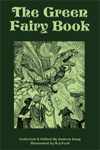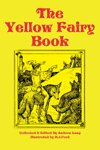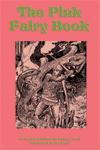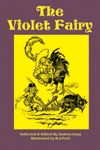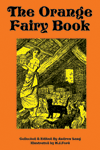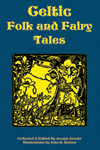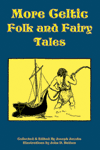 |
|
|
|
|
Folk and Fairy Tale Books
|
|
Andrew
Lang's "Color"
Fairy Books
Joseph
Jacobs'
Folk
and
Fairy
Tales
Irish,
Japanese, Hindu, &
Red Indian Fairy
Tales
|
|
|
|
|
|
|
|
|
| |
|
|
| |
|
|
|
|
|
|
|
|
|
|
|
|
|
|
|
Over
a
century ago, in
1890, Joseph Jacobs began collecting the first known set of English
fairy tales, in response to a then popular feeling that "there were no
English fairy tales," and thereby contributing heavily to the field of
fairy tale studies. By 1916 he had published six folk and fairy tale books:
Joseph Jacob’s
English Folk
and Fairy Tales,
More English Folk
and Fairy Tales,
Indian Folk
and Fairy Tales,
Celtic Folk
and Fairy Tales,
More Celtic Folk
and Fairy Tales,
and European Folk and
Fairy Tales.
Each
of the four types published (English, Celtic, European, and Indian)
dealt with the folk and fairy tales indigent to the local populations
of those areas, as told by those living there. A true resource for
those interested in the spread of folk and fairy tales, each book
contains extensive notes about the stories as well as cross-references
between the stories, linking their style and tracing possible paths by
which they spread from one area to another.
|
|
|
|
|
|
|
|
|
Irish,
Japanese, Hindu &
Red Indian Fairy
Tales
|
|
|
|
|
|
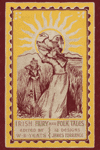 ISBN: ISBN:
978-1-60459-796-7

 |
"Irish
Fairy
and
Folk
Tales" was
collected
and edited by the renowned Nobel Prize-winning Irish poet,
playwright, and essayist who spearheaded the Celtic Renaissance in the
early 20th century, William
Butler
Yeats. The sixty-five tales and
poems in this delightful collection uniquely capture the rich heritage
of the Celtic imagination. Filled with legends of village ghosts,
fairies, mermaids, demons, witches, priests, and saints, these stories
are enchanting and entertaining, and evoke both tender pathos and
lighthearted mirth.
As Yeats says his introduction, "These folk-tales
are full of
simplicity and musical occurrences, for they are the literature of a
class for whom every incident in the old rut of birth, love, pain, and
death has cropped up unchanged for centuries: who have steeped
everything in the heart: to whom everything is a symbol."
Highly rated by both literary critics and
common-man readers, this book
is highly recommended to all interested in fairy and folk tales,
especially those interested Irish traditions and folklore. Includes
eight pages of notes on the stories and twelve illustrations by James
Torrance, from the 1907 edition.
Divided into nine sections, this book contains these stories:
The
Trooping
Fairies — Frank Martin and the Fairies, The Priest’s
Supper, The Fairy Well of Lagnanay, Teig O’Kane (Tadhg
Cáthán) and the Corpse, Paddy Corcoran’s Wife, Cusheen
Loo, The White Trout; a Legend of Cong, The Fairy Thorn, The Legend of
Knockgrafton, A Donegal Fairy; Changelings — The Brewery of Egg-shells,
The Fairy Nurse, Jamie Freel and the Young Lady, The Stolen Child; The
Merrow— The Soul Cages, Flory Cantillon’s Funeral.
The
Solitary
Fairies — The Lepracaun; Or, Fairy Shoemaker, Master
and Man, Far Darrig in Donegal; The Pooka — The Piper and the
Púca, Daniel O’Rourke, The Kildaee Pooka; The Banshee — How
Thomas Connolly Met the Banshee, A Lamentation, The Banshee of the Mac
Carthys.
Ghosts
— A Dream, Grace Connor, A Legend of Tyrone, The Black Lamb, Song of
the Ghost, The Radiant Boy, The Fate of Frank M’Kenna.
Witches,
Fairy
Doctors — Bewitched Butter (Donegal), A Queen’s County
Witch), The Witch Hare, Bewitched Butter, The Horned Women, The
Witches’ Excursion, The Confessions of Tom Bourke, The Pudding
Bewitched.
T’yeer-na-n-oge
— The Legend of O’Donoghue, Rent Day, Loughleagh (Lake of Healing),
Hy-Brasail: the Isle of the Blest, The Phantom Isle.
Saints,
Priests — The Priest’s Soul, The Priest of Coloony, The
Story of
the Little Bird, Conversion of King Laoghaire’s Daughters, King O’Toole
and His Goose.
The
Devil— The Demon Cat, The Long Spoon, The Countess
Kathleen
O’Shea, The Three Wishes.
Giants
— The Giant’s Stairs, A Legend of Knockmany.
Kings,
Queens,
Princesses,
Earls,
Robbers — The Twelve Wild Geese, The
Lazy Beauty and Her Aunts, The Haughty Princess, The Enchantment of
Geaeoidh Iarla, Munachar and Manacher, Donald and His Neighbors, The
Jackdaw, The Story of Conn-eda; or the Golden Apples of Lough Erne.
|
|
|
|
|
|
|
|
"James Stephens’ “Irish Fairy Tales”,
with Arthur Rackham’s twenty-five original illustrations, twelve in full-color,
brings to vivid life the exciting days of ancient Ireland
when Conn of the Hundred Battles was High King at Tara and the great
Fionn mac Uail led the Fianna against the enemies of Ireland.
Fionn mac Uail was a hunter-warrior of Irish
mythology (appearing also
in the mythologies of Scotland and the Isle of Man). The stories of
Fionn and his followers, the Fianna, form the Fenian cycle or
Fiannaidheacht.
Fionn was the son of Uail, leader of the Fianna,
and Muirne, daughter of the druid Tadg mac Nuadat who lived on the hill
of Almu in County Kildare. From this beginning Fionn becomes the
greatest warrior in Irish mythology.
Filled with adventure, humor, magic, and romance,
Irish Fairy Tales was hailed as one of the great fairy tale classics
when it was first published in 1920. Even today it appeals greatly to
readers of all ages.
This volume includes the ten tales: “The Story of
Tuan Mac Cairill,” “The Boyhood of Fionn,” “The Birth of Bran,”
“Oisin’s Mother,” “The Wooing of Becfola,” “The Little Brawl at Allen,”
“The Carl of the Drab Coat,” “The Enchanted Cave of Cesh Corran,”
“Becuma of the White Skin,” and “Mongan’s Frenzy.”
|
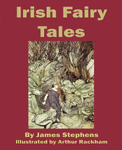
ISBN:
978-1-61720-439-5

 |
|
|
|
|
|
|
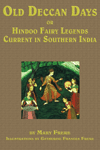 ISBN: ISBN:
978-1-61720-435-7

 |
Old Deccan Days, or,
Hindoo Fairy Tales Current in Southern India
is a collection of folk tales from India’s rich fairyland where rajas,
ranis, rakshas, jackals, magicians, and cobras prevail. Children will
enjoy the daring, brave, and wonderful creatures and people that
populate the stories as they strive to improve their lives or to save
themselves, their friends, and their loved ones from trials most deadly.
First published in 1868, this was the first English-language
field-collected set of twenty-four traditional stories from the
southern Indian state of Maharashtra. The author, Mary Eliza Isabella
Frere (1845-1911), travelled to India in 1863 to stay with her father,
Sir Bartle Frere, the Governor of Bombay. She became fascinated with
Indian culture and transcribed these stories from her ayah (nanny and
chaperone) Anna Liberata da Souza, who had been told them by her
grandmother. Expressive and detailed, these stories formed part of
southern India’s traditional oral culture, at risk at the time of being
lost. German orientologist Max Müller (1823–1900) reviewed this
collection and wrote that her rendition of Sanskrit originals read like
a direct translation of ancient Sanskrit.
This is a copy of the third edition, published in 1881, and has a brief
nine-page biography of the narrator, Anna Liberata da Souza, describing
her life and childhood. In the third-edition Preface Mary Frere
provides more details on the events surrounding her collecting the
stories, which is in addition to the information on the stories
themselves and the conventions she took in recording them given in the
Introduction and the Collector’s Apology. The books was extremely
popular, being reprinted in four editions by 1889 and encouraged the
study of comparative mythology while revealing new information
concerning Indian traditional culture.
|
|
|
|
|
|
|
|
"The Japanese
Fairy Book"
was
originally
published
in
1908
as
"Japanese
Fairy
Tales."
This
edition
contains
all
twenty-two
of
the
original
stories
and
all
thirty-one
of
the
original
illustrations
by
Japanese
artists.
The
stories
were
translated
from
the
modern
versions
recorded
bySadanami Sanjin.
As Ms.
Yei
Ozaki, the editor,
tells us in the Preface,
"these stories are not literal translations, and though the
Japanese story and all quaint Japanese expressions have been faithfully
preserved, they have been told more with the view to interest young
readers of the West than the technical student of folk-lore."
Many of the stories in this volume are based on
actual historical
figures from Japanese history, while others are simple fanciful tales.
As Yei also admits in the Preface, "I have followed my fancy in adding
such touches of local color or description as they seemed to need or as
pleased me, and in one or two instances I have gathered in an incident
from another version." This collection was specifically intended for
children, and consequently edited for that end, with the character and
spirit of the original stories being carefully preserved.
The stories in this book are: My Lord Bag of Rice;
The Tongue-Cut
Sparrow; The Story Of Urashima Taro, The Fisher Lad; The Farmer And The
Badger; The "Shinansha," Or The South Pointing Carriage; The Adventures
Of Kintaro, The Golden Boy; The Story Of Princess Hase; The Story Of
The Man Who Did Not Wish To Die; The Bamboo-Cutter And The Moon-Child;
The Mirror Of Matsuyama; The Goblin Of Adachigahara; The Sagacious
Monkey And The Boar; The Happy Hunter And The Skillful Fisher; The
Story Of The Old Man Who Made Withered Trees To Flower; The Jelly Fish
And The Monkey; The Quarrel Of The Monkey And The Crab; The White Hare
And The Crocodiles; The Story Of Prince Yamato Take; Momotaro, Or The
Story Of The Son Of A Peach; The Ogre Of Rashomon; How An Old Man Lost
His Wen; and The Stones Of Five Colors And The Empress Jokwa.
|
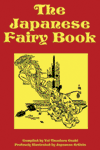
ISBN:
978-1-60459-754-7

 |
|
|
|
|
|
|
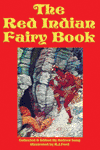
ISBN:
978-1-60459-753-0


|
"The
Red Indian Fairy Book" was originally published in 1917.
This
edition contains all sixty-four of the original stories collected and
edited by Frances
Jenkins Olcott
and all
seventeen of the original illustrations and the original
color
plate
(used on the cover) by Frederick
Richardson. Of special interest to storytellers is the
included extensive subject index, expanded for this edition.
This collection was specifically intended for
children, and
consequently edited for that end, with the character and spirit of the
original stories being carefully preserved. Includes stories from
the Algonquin, Arapaho, Arikara, Blackfoot, Caddo, Cherokee, Flathead,
Hopi, Iroquois, Menominee, Micmac, Mohawk, Navaho, Passamaquoddy, Pima,
Salteaux, Skidi Pawnee, Vuntakutchin, Whullemooch, Wichita, Wyandot,
Yakima, and Zuñi tribes in North America.
This book contains these stories: The Spring
Beauty (Chippewa); Little
Dawn Boy and the Rainbow Trail (Navaho); The Meadow Dandelion
(Chippewa); Little Burnt-Face (Micmac); The Elves (Iroquois);
Woodpecker Gray (Wyandot); The Kind Hawk (Hopi); The Boy Who Became a
Robin (Chippewa); Legend of the Violet (Iroquois); The Star and the
Water Lilies (Chippewa); Why Wild Roses Have Thorns (Salteaux); How the
Fairies Came (Algonquin); The Summer Fairies (Algonquin); Leelinau the
Fairy Girl (Chippewa); The Sky Elk (Iroquois); Legend of the Morning
Star (Iroquois); The Firebird (Whullemooch); Young-Boy-Chief (Wichita);
The Star Bride (Blackfoot); Scar-Face (Blackfoot); Ahneah the Rose
Flower (Iroquois); Legend of Niagara and the Great Lakes (Chippewa);
How the Hunter Became a Partridge (Passamaquoddy); How Partridge Built
the Birds’ Canoes (Passamaquoddy); The Noisy Chipmunk (Yakima); The
Wind-Blower (Micmac); The Silver Brooches (Attributed to the Mohawk);
How Indian Corn Came into the World (Chippewa); The Spirit of the Corn
(Iroquois); The Little Corn-Bringer (Hopi); The Nuts of Jonisgyont
(Iroquois); Little Owl Boy (Arapaho); The Chestnut Kettle (Iroquois);
The Ugly Wild Boy (Zuñi); Pitcher the Witch and the Black Cats
(Algonquin); Coyote the Hungry (Caddo); Coyote the Proud (Pima); The
Magic Windpipe (Arikara); The Birds’ Ball-game (Cherokee); Why the
Turkey Gobbles (Cherokee); The Land of the Northern Lights (Algonquin);
The Poor Turkey Girl (Zuñi); The Mud Pony (Skidi Pawnee); The
Wishes (Micmac); The Mikumwess (Micmac); The First Pine Trees (Micmac);
The Hidden Waters (Iroquois); Jowiis and the Eagles (Iroquois);
Shingebiss (Chippewa); The Boy in the Jug (Hopi); The Brother and
Sister (Arapaho); The Snow Man (Menominee); The Rolling Rock
(Flathead); The Boy in the Moon (Vuntakutchin); The Discontented Rock
(Iroquois); The Singing Maidens (Wyandot); The Star Maiden (Wyandot);
How Maple-sugar Came (Salteaux); Mishosha or the Enchanted Sugar-Maple
(Chippewa); How Master Rabbit Went Fishing (Micmac); The Woodpecker
Girls (Micmac); Bad Wild Cat (Passamaquoddy); How the Four Winds Were
Named (Iroquois); and the Legend of the Trailing Arbutus (Iroquois).
 |
|
|
|
|
|
| |
|
|
|
|
|
|
|
|
|
| Andrew
Lang's "Color" Fairy
Books |
|
|
|
|
|
|
|
|
|
|
A
short biography of
Andrew Lang's life and career. |
 |
 |
Index
to the stories, both
by book and alphabetical. |
|
|
|
|
|
|
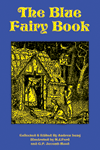
ISBN:
978-1-60459-547-5

 |
"The
Blue
Fairy
Book" was
originally published in 1889. This edition contains all 37 of the
original stories and all 127 of the original H.J. Ford and C.P. Jacomb
Hood illustrations.
This book includes the stories: The Bronze Ring;
Prince Hyacinth and
the Dear Little Princess; East of the Sun and West of the Moon; The
Yellow Dwarf; Little Red Riding Hood; The Sleeping Beauty in the Wood;
Cinderella, or The Little Glass Slipper; Aladdin and the Wonderful
Lamp; The Tale of a Youth who set out to learn what Fear was;
Rumpelstiltzkin; Beauty and The Beast; The Master-Maid; Why the Sea is
Salt; The Master Cat; or, Puss in Boots; Felicia and the Pot of Pinks;
The White Cat; The Water-Lily. The Gold-Spinners.; The Terrible Head;
The Story of Pretty Goldilocks; The History of Whittington; The
Wonderful Sheep; Little Thumb; The Forty Thieves; Hansel and Grettel;
Snow-White and Rose-Red; The Goose-Girl; Toads and Diamonds; Prince
Darling; Blue Beard; Trusty John; The Brave Little Tailor; A Voyage to
Lilliput; The Princess on the Glass Hill; The Story of Prince Ahmed and
the Fairy Paribanou; The History of Jack The Giant-Killer; The Black
Bull of Norroway; and The Red Etin.
|
|
|
|
|
|
|
|
"The
Red
Fairy
Book" was published in 1890. This edition contains all
thirty-seven of the original stories and all ninety-nine of the
original H.J. Ford
and Lancelot Speed
illustrations.
The stories included in this book are: The Twelve
Dancing Princesses;
The Princess Mayblossom; Soria Moria Castle; The Death of Koschei the
Deathless; The Black Thief and Knight of the Glen; The Master Thief;
Brother and Sister; Princess Rosette; The Enchanted Pig; The Norka; The
Wonderful Birch; Jack and the Beanstalk; The Little Good Mouse;
Graciosa and Percinet; The Three Princesses of Whiteland; The Voice of
Death; The Six Sillies; Kari Woodengown; Drakestail; The Ratcatcher;
The True History of Little Goldenhood; The Golden Branch; The Three
Dwarfs; Dapplegrim; The Enchanted Canary; The Twelve Brothers;
Rapunzel; The Nettle Spinner; Farmer Weatherbeard; Mother Holle;
Minnikin; Bushy Bride; Snowdrop; The Golden Goose; The Seven Foals; The
Marvellous Musician; and The Story of Sigurd.
|
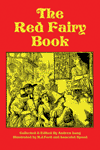
ISBN:
978-1-60459-544-4


|
|
|
|
|
|
|
|
|
|
|
|
|
|
|
|
|
|
|
|
|
"The
Pink
Fairy
Book"
was
published
in
1897.
This
edition
contains
all
41 of the original stories and all 69 of the
original H.J. Ford
black-and-white illustrations.
This book has these stories: The Cat’s Elopement;
How the Dragon Was
Tricked; The Goblin and the Grocer; The House in the Wood;
Uraschimataro and the Turtle; The Slaying of the Tanuki; The Flying
Trunk; The Snow-man; The Shirt-collar; The Princess in the Chest; The
Three Brothers; The Snow-queen; The Fir-tree; Hans, the Mermaid’s Son;
Peter Bull; The Bird ‘Grip’; Snowflake; I Know What I Have Learned; The
Cunning Shoemaker; The King Who Would Have a Beautiful Wife; Catherine
and Her Destiny; How the Hermit Helped to Win the King’s Daughter; The
Water of Life; The Wounded Lion; The Man Without a Heart; The Two
Brothers; Master and Pupil; The Golden Lion; The Sprig of Rosemary; The
White Dove; The Troll’s Daughter; Esben and the Witch; Princess
Minon-minette; Maiden Bright-eye; The Merry Wives; King Lindorm; The
Jackal; the Dove; and the Panther; The Little Hare; The Sparrow with
the Slit Tongue; The Story of Ciccu; and Don Giovanni De La Fortuna.
|
|
|
|
|
|
|
|
"The
Grey
Fairy
Book" was published in 1900. This edition contains all
thirty-five of the original stories and all fifty-eight of the original
H.J.
Ford black-and-white
illustrations.
This book includes these stories: Donkey Skin; The
Goblin Pony; An
Impossible Enchantment; The Story of Dschemil and Dachemila; Janni and
the Draken; The Partnership of the Thief and the Liar; Fortunatus and
his Purse; The Goat-faced Girl; What came of picking Flowers; The Story
of Bensurdatu; The Magician’s Horse; The Little Gray Man; Herr Lazarus
and the Draken; The Story of the Queen of the Flowery Isles; Udea and
her Seven Brothers; The White Wolf; Mohammed with the Magic Finger;
Bobino; The Dog and the Sparrow; The Story of the Three Sons of Hali;
The Story of the Fair Circassians; The Jackal and the Spring The Bear;
The Sunchild The Daughter of Buk Ettemsuch; Laughing Eye and Weeping
Eye, or the Limping Fox; The Unlooked for Prince; The Simpleton; The
Street Musicians; The Twin Brothers; Cannetella; The Ogre; A Fairy’s
Blunder; Long, Broad, and Quickeye; and Prunella.
|
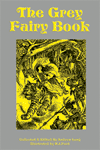
ISBN:
978-1-60459-756-1


|
|
|
|
|
|
|
|
|
|
|
|
|
|
"The
Crimson
Fairy
Book" was published in 1903. This edition contains all 36
of the original stories and all 53 of the original H.J. Ford
black-and-white illustrations.
This book includes these stories: Lovely Ilonka;
Lucky Luck; The Hairy
Man; To your Good Health!; The Story of the Seven Simons; The Language
of Beasts; The Boy who could keep a Secret; The Prince and the Dragon;
Little Wildrose; Tiidu the Piper; Paperarello; The Gifts of the
Magician; The Strong Prince; The Treasure Seeker; The Cottager and his
Cat; The Prince who would seek Immortality; The Stone-cutter; The
Gold-bearded Man; Tritill, Litill, and the Birds; The Three Robes; The
Six Hungry Beasts; How the Beggar Boy turned into Count Piro; The Rogue
and the Herdsman; Eisenkopf; The Death of Abu Nowas and of his Wife;
Motikatika; Niels and the Giants; Shepherd Paul; How the wicked Tanuki
was punished; The Crab and the Monkey; The Horse Gullfaxi and the Sword
Gunnfoder; The Story of the Sham Prince, or the Ambitious Tailor; The
Colony of Cats; How to find out a True Friend; Clever Maria; and The
Magic Kettle.
|
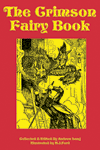
ISBN:
978-1-60459-759-2


|
|
|
|
|
|
|

ISBN:
978-1-60459-758-5


|
"The
Brown
Fairy
Book"
was
published
in
1904.
This
edition
contains
all
32 of the original stories and all 50 of the
original H.J. Ford black-and-white
illustrations.
This book includes these stories: What the Rose
did to the Cypress;
Ball-Carrier and the Bad One; How Ball-Carrier finished his Task; The
Bunyip; Father Grumbler; The Story of the Yara; The Cunning Hare; The
Turtle and his Bride; How Geirald the Coward was Punished;
Hábogi; How the Little Brother set Free his Big Brothers; The
Sacred Milk of Koumongoé; The Wicked Wolverine; The Husband of
the Rat’s Daughter; The Mermaid and the Boy; Pivi and Kabo; The Elf
Maiden; How Some Wild Animals became Tame Ones; Fortune and the
Wood-Cutter; The Enchanted Head; The Sister of the Sun; The Prince and
the Three Fates; The Fox and the Lapp; Kisa the Cat; The Lion and the
Cat; Which was the Foolishest?; Asmund and Signy; Rübezahl; Story
of the King who would be Stronger then Fate; Story of Wali Dâd
the Simple-hearted, Tale of a Tortoise and of a Mischievous Monkey; and
The Knights of the Fish.
|
|
|
|
|
|
|
|
"The
Orange
Fairy
Book" was published in 1906. This edition contains all 33
of the original stories and all 58 of the original H.J. Ford
illustrations.
This book includes the stories: The Story of the
Hero Makóma;
The Magic Mirror; Story of the King Who Would See Paradise; How Isuro
the Rabbit Tricked Gudu; Ian, the Soldier’s Son; The Fox and the Wolf;
How Ian Direach Got the Blue Falcon; The Ugly Duckling; The Two
Caskets; The Goldsmith’s Fortune; The Enchanted Wreath; The Foolish
Weaver; The Clever Cat; The Story of Manus; Pinkel the Thief; The
Adventures of a Jackal; The Adventures of the Jackal’s Eldest Son; The
Adventures of the Younger Son of the Jackal; The Three Treasures of the
Giants; The Rover of the Plain; The White Doe; The Girl-Fish; The Owl
and the Eagle; The Frog and the Lion Fairy; The Adventures of Covan the
Brown Haired; The Princess Bella-Flor; The Bird of Truth; The Mink and
the Wolf; Adventures of an Indian Brave; How the Stalos Were Tricked;
Andras Baive; The White Slipper; and The Magic Book.
|
|
|
|
|
|
|
|
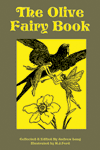
ISBN:
978-1-60459-795-0


|
"The
Olive
Fairy
Book"
was
published
in
1907.
This
edition
contains
all
29 of the original stories and all 51 of the
original H.J. Ford
illustrations.
This book contains these stories: Madschun, The
Blue Parrot, Geirlaug
the King’s Daughter, The Story of Little King Loc, ‘A Long-bow Story’,
Jackal or Tiger?, The Comb and the Collar, The Thanksgiving of the
Wazir, Samba the Coward, Kupti and Imani, The Strange Adventures of
Little Maia, Diamond cut Diamond, The Green Knight, The Five Wise Words
of the Guru, The Golden-headed Fish, Dorani, The Satin Surgeon, The
Billy Goat and the King, The Story of Zoulvisia, Grasp all, Lose all,
The Fate of the Turtle, The Snake Prince, The Prince and Princess in
the Forest, The Clever Weaver, The Boy Who Found Fear at Last, He Wins
Who Waits, The Steel Cane, The Punishment of the Fairy Gangana, and The
Silent Princess.
|
|
|
|
|
|
|
|
"The
Lilac
Fairy
Book"
was
published
in
1910.
This
edition
contains
all
33 of the original stories and all 52 of the
original H.J. Ford
illustrations.
This book includes the stories: The Shifty Lad,
The False Prince and
the True, The Jogi’s Punishment, The Heart of a Monkey, The Fairy
Nurse, A Lost Paradise, How Brave Walter Hunted Wolves, The King of the
Waterfalls, A French Puck, The Three Crowns, The Story of a Very Bad
Boy, The Brown Bear of Norway, Little Lasse, ‘Moti’, The Enchanted
Deer, A Fish Story, The Wonderful Tune, The Rich Brother and the Poor
Brother, The One-Handed Girl, The Bones of Djulung, The Sea King’s
Gift, The Raspberry Worm, The Stones of Plouhinec, The Castle of
Kerglas, The Battle of the Birds, The Lady of the Fountain, The Four
Gifts, The Groac’h of the Isle of Lok, The Escape of the Mouse, The
Believing Husbands, The Hoodie-Crow, The Brownie of the Lake, and The
Winning of Olwen.
|
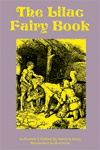
ISBN:
978-1-60459-794-3


|
|
|
| Alphabetical
index of the stories in the Andrew Lang "Color"
Fairy Book series. |
|
|
|
|
|
|
|
|
|
|
|
|
|
|
|
|
| Joseph
Jacobs' Folk and Fairy
Tales |
|
|
|
|
|
|
|
|
|
|
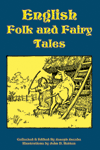
ISBN:
978-1-60459-870-4


|
"English Folk
and Fairy
Tales," the first in a series of six books of
collected stories by Joseph Jacobs, was originally published in 1890.
This edition, from 1898, contains all forty-three of the original
stories and all sixty-eight of the original illustrations by John D.
Batten. Also included are twenty-six pages of Mr. Jacobs
notes
and
references on the stories for the interested scholar, expanded from the
original twenty-three pages in the 1890 version. "English Folk and Fairy Tales"
is
one of the most popular of Joseph Jacobs' collections, with folk and
fairy tales selected from over 140 such tales he recovered in his
vocation as a fairy-tale archivist. Early variations of well-known
tales are included such as ‘Cinderella’, ‘Three Little Pigs,’ ‘Jack and
the Beanstalk,’ ‘Henny-Penny,’ ‘The Three Bears,’ and ‘Tom Tit Tot.’
Along with these classics are lesser-known tales full of suspense,
action, ghosts, magic, wicked stepmothers, love lost, imps, and
fairies. And not all have happily-ever-after endings!
Included in this book are: Tom Tit Tot; The Three
Sillies; The
Rose-Tree; The Old Woman and her Pig; How Jack went to seek his
Fortune; Mr. Vinegar; Nix Nought Nothing; Jack Hannaford; Binnorie;
Mouse and Mouser; Cap O’ Rushes; Teeny-Tiny; Jack and the Beanstalk;
The Story of the Three Little Pigs; The Master and his Pupil; Titty
Mouse and Tatty Mouse; Jack and his Golden Snuff-Box; The Story of the
Three Bears; Jack the Giant-Killer; Henny-Penny; Childe Rowland; Molly
Whuppie; The Red Ettin; The Golden Arm; The History of Tom Thumb; Mr.
Fox; Lazy Jack; Johnny-Cake; Earl Mar’s Daughter; Mr. Miacca;
Whittington and his Cat; The Strange Visitor; The Laidly Worm of
Spindleston Heugh; The Cat and the Mouse; The Fish and the Ring; The
Magpie’s Nest; Kate Crackernuts; The Cauld Lad of Hilton; The Ass, the
Table, and the Stick; Fairy Ointment; The Well of the World’s End;
Master Of All Masters; and The Three Heads Of The Well.
This book is included with "More
English Folk and Fairy Tales" and "Indian Folk and Fairy Tales"
in the
"Joseph Jacob’s English,
More
English, and Indian Folk and Fairy Tales" volume of Flying
Chipmunk’s Joseph Jacob two-volume collection.
|
|
"More English
Folk and
Fairy Tales,"
the third in a series of six books
of collected stories by Joseph Jacobs, was published in
1894. This edition contains all forty-four of the original stories and
all fifty-two of the original illustrations by John D. Batten. Also
included are twenty-four pages of Mr. Jacobs notes and references on
the stories, for the interested scholar.
His first book, "English Folk and Fairy Tales,"
was very well received
by the English-speaking world and popular demand led to this volume,
the second set of stories culled from his store of 140 such tales he
recovered. Early variations of well-known tales are included such as
‘The Pied Piper,’ ‘The Three Wishes,’ ‘Scrapefoot’ (the original
‘Goldilocks’), and ‘Tom Hickathrift.’ Along with these classics are
lesser-known tales full of suspense, action, ghosts, magic, wicked
stepmothers, love lost, imps, and fairies. And not all have
happily-ever-after endings!
Included in this book are the stories: The Pied
Piper; Hereafterthis;
The Golden Ball; My Own Self; Black Bull of Norroway; Yallery Brown;
Three Feathers; Sir Gammer Vans; Tom Hickathrift; The Hedley Kow;
Gobborn Seer; Lawkamercyme; Tattercoats; The Wee Bannock; Johnny Gloke;
Coat o’ Clay; The Three Cows; The Blinded Giant; Scrapefoot; The Pedlar
of Swaffham; The Old Witch; The Three Wishes; The Buried Moon; A Son of
Adam; The Children in the Wood; The Hobyahs; A Pottle o’ Brains; The
King of England and His Three Sons; King John and the Abbot of
Canterbury; Rushen Coatie; The King o’ the Cats; Tamlane; The Stars in
the Sky; News!; Puddock, Mousie, and Ratton; The Little Bull-Calf; The
Wee, Wee Mannie; Habetrot and Scantlie Mab; Old Mother Wiggle-Waggle;
Catskin; Stupid’s Cries; The Lambton Worm; The Wise Men of Gotham; and
the Princess of Canterbury.
This book is included with "English
Folk and Fairy Tales" and "Indian
Folk
and
Fairy
Tales" in the "Joseph
Jacob’s
English, More English, and Indian Folk and Fairy Tales"
volume of Flying Chipmunk’s Joseph Jacob two-volume collection.
|
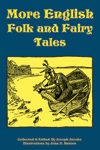
ISBN:
978-1-60459-871-1


|
|
"Celtic Folk
and Fairy
Tales", the third in Joseph Jacobs’s five-book "Folk and Fairy Tale"
series, was originally published in 1892. This edition contains all
twenty-six of the original stories, all forty-five of the original
illustrations, and all twenty-six letter-blocks by John D. Batten,
plus twenty-five pages of notes and references on the stories for the
interested scholar.
For untold generations in countless Irish
cottages, in front of
peat-fueled fires, some of the gayest, most fanciful, and most
sparkling folk tales that ever caused young eyes to grow brighter and
young hearts to beat faster were told. Fathers and mothers,
grandfathers and grandmothers, even great-grandfathers and
great-grandmothers have repeated the same stories that thrilled them as
youngsters.
In this book are the most popular of these
stories, each one richly
endowed with all the magic and charm, all the humor and color of the
vivid Irish Imagination. These stories, some of them more than a
thousand years old are as fascinating today as they were when Connla of
the Fiery Hair, the Horned Women, and Conall Yellowclaw roamed Irish
field, glenn, and forest.
This book contains these stories: Connla and the
Fairy Maiden; Guleesh;
The Field of Boliauns; The Horned Women; Conall Yellowclaw; Hudden and
Dudden and Donald O’Neary; The Shepherd of Myddvai; The Sprightly
Tailor; The Story of Deirdre; Munachar and Manachar; Gold-Tree and
Silver-Tree; King O’Toole and His Goose; The Wooing of Olwen; Jack and
His Comrades; The Shee An Gannon and The Gruagach Gaire; The
Story-Teller at Fault; The Sea-Maiden; A Legend of Knockmany; Fair,
Brown, and Trembling; Jack and His Master; Beth Gellert; The Tale of
Ivan; Andrew Coffey; The Battle of the Birds; Brewery of Eggshells; The
Lad with the Goat-Skin.
This book is included with
"European
Folk and Fairy Tales" and "More Celtic Folk and Fairy Tales" in the
"Joseph Jacob’s Celtic, More Celtic, and European Folk and Fairy Tales"
volume of Flying Chipmunk’s Joseph Jacob two-volume collection.
|
|
"More Celtic
Folk and
Fairy Tales", the fourth in Joseph Jacobs’ six-book "Folk and Fairy Tale"
series,
continues the wonderful Celtic stories begun in the book "Celtic Folk and Fairy Tales."
In
this book are another twenty of the most popular of these stories, each
one richly endowed with all the magic and charm, all the humor and
color of the vivid Irish Imagination. These stories, some of them more
than a thousand years old are as fascinating today as they were when
Fin, Cormac, and Kayn Mac Loy roamed Irish field, glenn, and forest.
"More Celtic Folk and Fairy Tales" was published
in 1894. This edition
contains all twenty of the original stories, all forty-six of the
original illustrations, and all twenty letter-blocks by John D. Batten, plus
thirteen pages
of notes and references on the stories for the interested scholar.
This book contains these stories: The
Fate of the Children of
Lir; Jack the Cunning Thief; Powel, Prince of Dyfed; Paddy O’Kelly and
the Weasel; The Black Horse; The Vision of MacConglinney; Dream of Owen
O’Mulready; Morraha; The Story of the McAndrew Family; The Farmer of
Liddesdale; The Greek Princess and the Young Gardener; The Russet Dog
Smallhead and the King’s Sons; The Legend of Knockgrafton; Elidore; The
Leeching of Kayn’s leg; How Fin went to the Kingdom of the Big Men; How
Cormac Mac Art went to Faery; The Ridere of Riddles; and The Tail.
This book is included along with "Celtic
Folk
and
Fairy
Tales" and "European
Folk and Fairy Tales" in the "Joseph
Jacob’s
Celtic,
More
Celtic,
and
European
Folk
and
Fairy
Tales"
volume of Flying Chipmunk’s Joseph Jacob two-volume collection.
|
|
|
|
This
time,
in
"Indian
Folk
and
Fairy
Tales,"
Joseph
Jacobs
takes
us
to
mystic,
far-off
India
—
land
of
the
Hindus.
He
has
compiled
legends
and
tales
that
have
entertained
the young people of India for more than a
thousand years, tales full of suspense, action, ghosts, magic, wicked
stepmothers, love lost, imps, and fairies. And not all have
happily-ever-after endings!
"Indian Folk and Fairy Tales," the fifth in the
series, was published
in 1912. This edition contains all twenty-nine of the original stories,
all nine of the original full-page illustrations, all forty of the
smaller illustrations, and all thirty letter blocks by John D. Batten. Also
included are
twenty-four pages of Mr. Jacobs’ notes and references on the stories,
for the interested scholar.
Included in this book are the stories: The Lion
and the Crane; How the
Raja’s son won the Princess Labam; The Lambikin; Punchkin; The Broken
Pot; The Magic Fiddle; The Cruel Crane Outwitted; Loving Laili; The
Tiger, the Brahman, and the Jackal; The Soothsayer’s Son; Harisaman;
The Charmed Ring; The Talkative Tortoise; A Lac of Rupees for a bit of
Advice; The Gold-Giving Serpent; The Son of Seven Queens; A Lesson for
Kings; Pride Goeth Before A Fall; Raja Rasalu; The Ass in the Lion’s
Skin; The Farmer and the Money-Lender; The Boy who had a Moon on his
Forehead and a Star on his Chin; The Prince and the Fakir; Why the Fish
laughed; The Demon with the Matted Hair; The Ivory City and its Fairy
Princess; How Sun, Moon, and Wind went out to Dinner; How the wicked
Sons were Duped; and The Pigeon and the Crow.
This book is
included with "English
Folk and Fairy
Tales" and "More
English Folk
and Fairy Tales" in the "Joseph
Jacob’s
English,
More
English,
and
Indian
Folk
and
Fairy
Tales"
volume of Flying Chipmunk’s Joseph Jacob two-volume collection.
|
|
In
"European
Folk and
Fairy Tales", Joseph Jacobs has compiled legends and tales
that
have entertained the young people of European continent for more than a
thousand years, tales full of suspense, action, ghosts, magic, wicked
stepmothers, love lost, imps, and fairies. And not all have
happily-ever-after endings! "European Folk and Fairy Tales," is the
last in the series and was published in 1916. This edition contains all
twenty-five of the original stories and all forty-eight illustrations
by John D. Batten.
Also
included are thirty-one pages of Mr. Jacobs’ notes and references on
the stories, for the interested scholar.
Included in this book are the stories: The
Cinder-Maid; All Change; The
King of the Fishes; Scissors; Beauty and the Beast; Reynard and Bruin;
The Dancing Water, the Singing Apple, and the Speaking Bird; The
Language of Animals; The Three Soldiers; A Dozen at a Blow; The Earl of
Cattenborough; The Swan Maidens; Androcles and the Lion; Day-Dreaming;
Keep Cool; The Master Thief; The Unseen Bridegroom; The Master-Maid; A
Visitor from Paradise; Inside Again; John the True; Johnnie and
Grizzle; The Clever Lass; Thumbkin; and Snowwhite.
This book is included with "Celtic
Folk and Fairy Tales" and "More
Celtic
Folk
and
Fairy
Tales" in the "Joseph
Jacob’s
Celtic, More Celtic, and
European Folk and Fairy Tales" volume of Flying Chipmunk’s
Joseph Jacob two-volume collection.
|

ISBN:
978-1-60459-878-0


|
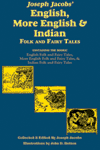
Paperback:
978-1-60459-895-7


Hardcover:
978-1-60459-903-9

 |
"English, More
English,
and Indian Folk and Fairy Tales," includes the first,
third, and
fifth books of the six series by Joseph Jacobs, was published in 1890,
1894, and 1912, respectively. This volume has all 116 of the original
stories and all 169 of the original John
D.
Batten illustrations, as well as all 30 letter-blocks.
Also
included are 74 pages of Mr. Jacobs’ notes and references.
Included in this volume are: (English Folk
and Fairy
Tales) Tom Tit Tot; The Three Sillies; The Rose-Tree; The
Old
Woman and her Pig; How Jack went to seek his Fortune; Mr. Vinegar; Nix
Nought Nothing; Jack Hannaford; Binnorie; Mouse and Mouser; Cap O’
Rushes; Teeny-Tiny; Jack and the Beanstalk; The Story of the Three
Little Pigs; The Master and his Pupil; Titty Mouse and Tatty Mouse;
Jack and his Golden Snuff-Box; The Story of the Three Bears; Jack the
Giant-Killer; Henny-Penny; Childe Rowland; Molly Whuppie; The Red
Ettin; The Golden Arm; The History of Tom Thumb; Mr. Fox; Lazy Jack;
Johnny-Cake; Earl Mar’s Daughter; Mr. Miacca; Whittington and his Cat;
The Strange Visitor; The Laidly Worm of Spindleston Heugh; The Cat and
the Mouse; The Fish and the Ring; The Magpie’s Nest; Kate Crackernuts;
The Cauld Lad of Hilton; The Ass, the Table, and the Stick; Fairy
Ointment; The Well of the World’s End; Master Of All Masters; and The
Three Heads Of The Well; (More English Folk and
Fairy Tales)
The
Pied
Piper;
Hereafterthis;
The
Golden
Ball;
My
Own
Self;
Black
Bull
of
Norroway;
Yallery
Brown;
Three
Feathers;
Sir
Gammer
Vans;
Tom
Hickathrift;
The
Hedley
Kow;
Gobborn
Seer;
Lawkamercyme;
Tattercoats;
The Wee Bannock; Johnny Gloke; Coat o’ Clay; The Three Cows; The
Blinded Giant; Scrapefoot; The Pedlar of Swaffham; The Old Witch; The
Three Wishes; The Buried Moon; A Son of Adam; The Children in the Wood;
The Hobyahs; A Pottle o’ Brains; The King of England and His Three
Sons; King John and the Abbot of Canterbury; Rushen Coatie; The King o’
the Cats; Tamlane; The Stars in the Sky; News!; Puddock, Mousie, and
Ratton; The Little Bull-Calf; The Wee, Wee Mannie; Habetrot and
Scantlie Mab; Old Mother Wiggle-Waggle; Catskin; Stupid’s Cries; The
Lambton Worm; The Wise Men of Gotham; and the Princess of Canterbury; (Indian Folk
and Fairy
Tales) The Lion and the Crane; How the Raja’s son won the
Princess Labam; The Lambikin; Punchkin; The Broken Pot; The Magic
Fiddle; The Cruel Crane Outwitted; Loving Laili; The Tiger, the
Brahman, and the Jackal; The Soothsayer’s Son; Harisaman; The Charmed
Ring; The Talkative Tortoise; A Lac of Rupees for a bit of Advice; The
Gold-Giving Serpent; The Son of Seven Queens; A Lesson for Kings; Pride
Goeth Before A Fall; Raja Rasalu; The Ass in the Lion’s Skin; The
Farmer and the Money-Lender; The Boy who had a Moon on his Forehead and
a Star on his Chin; The Prince and the Fakir; Why the Fish laughed; The
Demon with the Matted Hair; The Ivory City and its Fairy Princess; How
Sun, Moon, and Wind went out to Dinner; How the wicked Sons were Duped;
and The Pigeon and the Crow.
 |
|
"Celtic, More
Celtic,
and European Folk and Fairy Tales" includes the second,
fourth,
and sixth books of the six book series by Joseph
Jacobs, was published in 1892, 1894, and 1916, respectively. This
volume has all 71 of the original stories and all 139 of the original John D. Batten
illustrations, as well as all 46 letter-blocks. Also
included are 69 pages of Mr. Jacobs’ notes and references.
Included in this volume are: (Celtic Folk
and Fairy
Tales) Connla and the Fairy Maiden; Guleesh; The Field of
Boliauns; The Horned Women; Conall Yellowclaw; Hudden and Dudden and
Donald O’Neary; The Shepherd of Myddvai; The Sprightly Tailor; The
Story of Deirdre; Munachar and Manachar; Gold-Tree and Silver-Tree;
King O’Toole and His Goose; The Wooing of Olwen; Jack and His Comrades;
The Shee An Gannon and The Gruagach Gaire; The Story-Teller at Fault;
The Sea-Maiden; A Legend of Knockmany; Fair, Brown, and Trembling; Jack
and His Master; Beth Gellert; The Tale of Ivan; Andrew Coffey; The
Battle of the Birds; Brewery of Eggshells; and The Lad with the
Goat-Skin; (More
Celtic Folk and Fairy Tales) The Fate of the
Children of
Lir; Jack the Cunning Thief; Powel, Prince of Dyfed; Paddy O’Kelly and
the Weasel; The Black Horse; The Vision of MacConglinney; Dream of Owen
O’Mulready; Morraha; The Story of the McAndrew Family; The Farmer of
Liddesdale; The Greek Princess and the Young Gardener; The Russet Dog;
Smallhead and the King’s Sons; The Legend of Knockgrafton; Elidore; The
Leeching of Kayn’s leg; How Fin went to the Kingdom of the Big Men; How
Cormac Mac Art went to Faery; The Ridere of Riddles; and The Tail; (European Folk
and Fairy
Tales) The Cinder-Maid; All Change; The King of the
Fishes;
Scissors; Beauty and the Beast; Reynard and Bruin; The Dancing Water,
the Singing Apple, and the Speaking Bird; The Language of Animals; The
Three Soldiers; A Dozen at a Blow; The Earl of Cattenborough; The Swan
Maidens; Androcles and the Lion; Day-Dreaming; Keep Cool; The Master
Thief; The Unseen Bridegroom; The Master-Maid; A Visitor from Paradise;
Inside Again; John the True; Johnnie and Grizzle; The Clever Lass;
Thumbkin; and Snowwhite.
 |
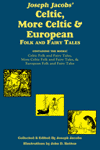
Paperback:
978-1-60459-896-4


Hardcover:
978-1-60459-904-6


|
|
|
|
|
|
|
|
|
|
|
|
|
|
|
|
|
|
Page and contents
Copyright © 2012 by Terry Kepner, All Rights Reserved
Book Covers displayed on this page are Copyright © 2008, 2009, 2010,
2011, 2012 by
Terry Kepner, All Rights Reserved
(please
notify "tkepner" at "aol.com" if you notice any broken links)

|
|





